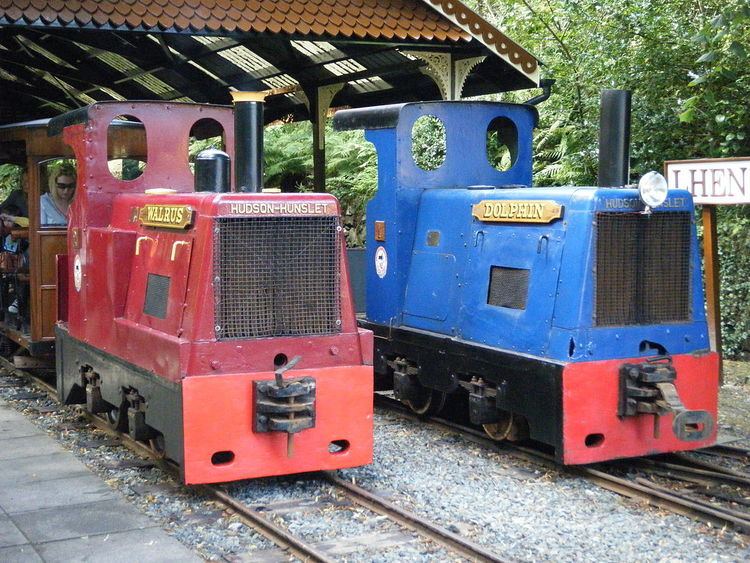Power type Diesel Serial number 4353 AAR wheel arr. 0-4-0dm | Builder Hunslet Engine Company Build date 1952 UIC class B | |
 | ||
Walrus is a diesel locomotive currently on the Groudle Glen Railway. Walrus has a sister locomotive called Dolphin.
Contents
Early career
This locomotive was one of three built in 1952 by the Hunslet Engine Company for Robert Hudson (explaining the unusual manufacturers' title which appears prominently, cast into the locomotive's radiator frontage). It was built to run in a sand and gravel pit in Twickenham and did so until closure, after which the three were put up for sale. Along with works No. 4352 the locomotive was purchased by Doddington Park in Chipping Sodbury where a pleasure ground had been established. It was at this time that the locomotive acquired a "steam outline" structure. This consisted of a sheet metal half-cab with oval windows, false dome and chimney. The exhaust from the engine which had previously been directed beneath the frames was re-routed to be shot from this new chimney to give the appearance that the engine was "steaming" along. The locomotive was given the name "Doddington Dragon" at this time and heraldic crests added to the side panels. By 1980 the park was suffering losses and was closed, the locomotive, her sister, carriages and all trackwork were put up for sale.
To Groudle Glen
When restoration of the Groudle Glen Railway began in 1982 the locomotive (and her sister) were purchased from the park together with all the rails, sleepers and associated pointwork, arriving on the Isle of Man shortly thereafter. In line with previous naming policy (the original locomotives had been named Sea Lion and Polar Bear as these animals were features of the zoo in the glen) the volunteers of the Isle of Man Steam Railway Supporters' Association named the locomotive Walrus and allocated it the fleet number "2". This was the first time fleet numbers had been given to locomotives on the railway, and it was the first engine on site at the railway. Both locomotives were given a green livery and wooden nameplates, and until the return of Sea Lion in 1987, provided all the motive power for the line's public operations and permanent way trains. The locomotive is retained today and performs shunting duties and winter works train duties regularly.
